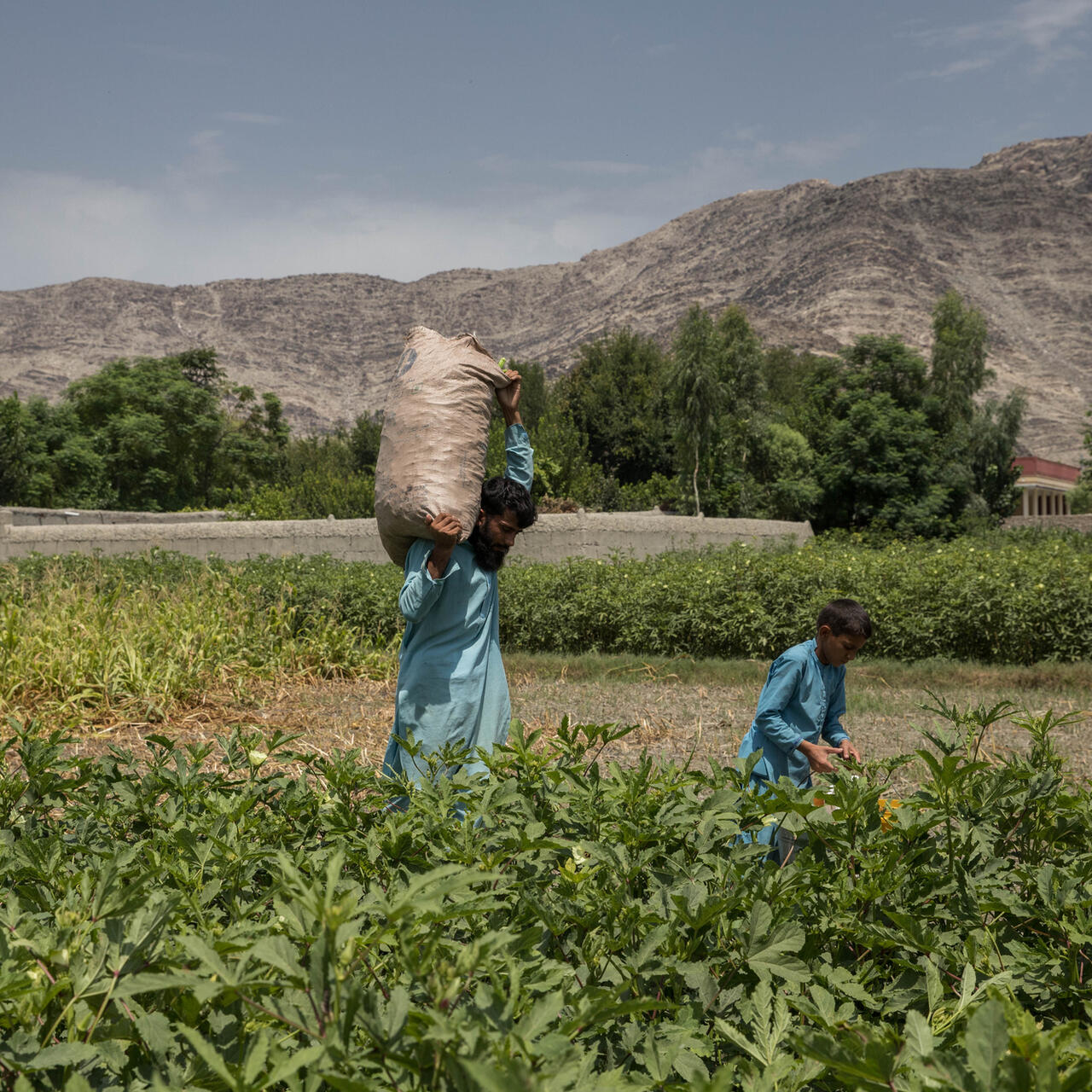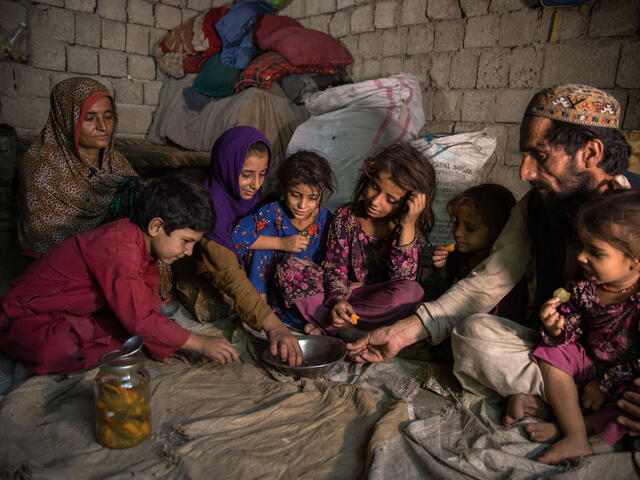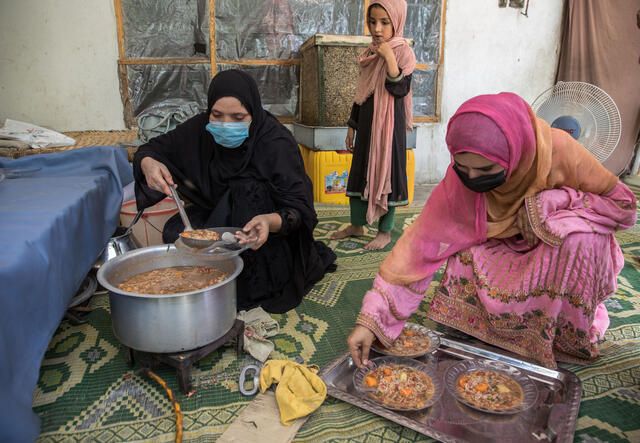
Afghanistan: An entire population pushed into poverty
Five reasons why Afghanistan remains within the top 3 countries most at risk of worsening humanitarian crisis in the International Rescue Committee’s Emergency Watchlist.

Five reasons why Afghanistan remains within the top 3 countries most at risk of worsening humanitarian crisis in the International Rescue Committee’s Emergency Watchlist.
Afghanistan remains within the top of Watchlist for 2023 – dropping from number one not because of an improvement in conditions, but because of the severity of the situation in East Africa. Here’s what you need to know about the humanitarian emergency.
Two years since the Islamic Emirate of Afghanistan (IEA, commonly known as the Taliban) took power, prompting international donors to suspend most non-humanitarian funding and freeze billions of dollars in assets, Afghans are feeling the devastating impacts of the economic collapse. A staggering 28.8 million people are currently in urgent need of support, marking an increase of nearly 60% compared to the previous year.
Decades of conflicts and climate change have not only shattered infrastructure but also forced millions to flee their homes. The relentless cycle of droughts and natural disasters is further exacerbated by soaring food prices and a significant lack of income opportunities for countless people who cannot access work.
In addition, globally, Afghanistan ranks 170th out of 170 countries for women’s inclusion, justice and security. Chilling announcements in December 2022 banned women from attending university and working for NGOs like the International Rescue Committee. The latter decision forced the IRC and other NGOs to suspend services as we cannot deliver services without female staff. (Since then, negotiations have since allowed the IRC to resume and expand the majority of our operations.)

“Increasing hunger, natural disasters, unemployment, a banking and liquidity crisis, rights-violating restrictions on women and girls, and the lack of functioning economy mean Afghans are facing a multitude of simultaneous crises,” – Samira Sayed Rahman, IRC Afghanistan director of advocacy.
Poverty is impacting more than 90% of the country’s population, with over half of Afghans reliant on humanitarian aid. Already, 91% of the average Afghan household’s money is spent on food, forcing many families to resort to rationing and other coping strategies.
With 75% of public spending in Afghanistan subsidized by international aid, major gaps in state finances remain. And with the IEA unwilling to make concessions on the conditions set for the release of its foreign reserves from the Afghan Fund, Afghanistan’s central bank remains unable to play its role in distributing money.
Food insecurity remains the greatest threat to everyday Afghans. Currently, 40% of the country’s population are facing acute food insecurity—the fourth highest figure in the world. People are forced to make impossible choices to put food on the table, and children are at particularly increased risk of starvation, malnutrition and hunger, and preventable diseases.

Afghanistan has faced its third year of drought. On top of this, it has seen violent flooding across the country driven by above average rainfall, melting Himalayan glaciers, and poor management of water infrastructure. The La Niña effect is predicted to lead to a third failed wet season next year, which would hamper food production and continue to drive people to displacement.
Almost 80% of those in need in Afghanistan are women and children, largely as a result of the economic crisis, alongside relentless restrictions put in place on women in society. As women-headed households endure rising hunger, mothers are forced to send their children to work to earn enough money to purchase food, causing a sharp uptick in child labor.
Restrictions on women’s access to work are also contributing to the failing economy, producing an economic loss of up to $1 billion—about 5% of Afghanistan’s GDP. It is crucial that women are allowed to work and included in every chance to contribute to their local economies - and the survival of their country
In 2022, the government cut spending on social services in the country by 81%. Combined with the halt in most international funding, this has severely weakened the delivery of essential public services. While a World Bank-managed program called the Afghanistan Reconstruction Trust Fund (ARTF) has allowed some services to resume, levels of development support to Afghanistan are set to continue to decline. This means services are unlikely to keep pace with rising needs.
Editor’s note: The IRC’s ability to deliver services relies on female staff at all levels of our organization. If we are not allowed to employ women, we are not able to deliver to those in need. For this reason, the IRC was forced to suspend our services in Afghanistan.However, we are proactively seeking approvals for female aid workers from the authorities to get all IRC staff back to work in a phased, sector-by-sector manner—and have since been able to restart our health and nutrition activities in eleven provinces.
The IRC has worked in Afghanistan since 1988, providing healthcare, education and emergency response services. In 2022, we scaled up our staff from 1,700 to 5000 today. 99% of our staff are Afghan and 40% are women. We operate in 12 provinces, supporting 68 health facilities and running 30 mobile health teams across the country. We also provide community-based education programs, family support centers, as well as job skills training and help finding employment.
Learn more about the IRC’s Afghanistan response and get our latest crisis updates
Donate now to support the IRC's life-changing work in Afghanistan and worldwide. We are on the frontlines providing critical aid to crisis-affected people in more than 50 countries, including places on the 2023 Emergency Watchlist.
Read more about the top 10 crises the world can’t ignore in 2023 and download the full 2023 Emergency Watchlist report for profiles of all 20 crisis countries on the IRC's list.
*Some names have been omitted for privacy and safety reasons.